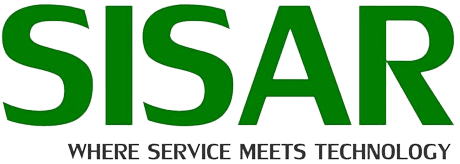The Internet of Things (IoT) has changed our lives and work. The intersection of the physical and digital worlds has opened a new realm of possibilities for businesses and consumers alike. Nevertheless, the Internet of Things is at a crossroads.

The IoT must transition to a truly integrated network within and across industry verticals to achieve the latter. The core obstacle that stands in the way is the risk. With the necessary trust, it’s possible to integrate IoT applications and networks.
The ultimate resolution lies within the co-existence of IoT and data security. By merging IoT with data security and management, we can unleash the complete potential of IoT by fusing technical, functional, and commercial aspects.
The IoT and Cyber protection Landscape
The Internet of Things (IoT) has experienced remarkable growth across various industries, fostering multiple environments in settings like factories and vehicles.
The growth of IoT has been slower than expected. The growth of IoT has been slower than expected. It is still difficult to have a smooth experience for devices moving between physical spaces with trusted identification and management. This is because of the need for separate steps.
IoT’s complexity, like autonomous systems and transportation, has created many opportunities for various players in the value chain. Nevertheless, this complexity also introduces the risks that could have severe consequences.
Due to the IoT’s control over physical operations, many IoT systems’ risk profiles are higher than traditional enterprise IT setups. To have a safe and smooth IoT experience, trust in digital systems is important. It is also crucial to combine both the features. Additionally, managed cyber security is the beginning of the design and testing stages.
Unfortunately, conventional IoT security approaches are inadequate in supporting this desired level of security and seamlessness. Buyers often find that current IoT solutions lack strong security, leading to hazards that require frequent updates and patches. Unfortunately, we may not reliably implement these updates.
The IoT industry needs to enhance security measures in solution design. This is necessary to bridge the gap and align with the robust security practices used in enterprise IT. By doing so, the industry can pave the way for a safer and more efficient IoT landscape.
The Combination of IoT and Cyber protection
Integrating IoT and virtual security converges technical, functional, and commercial aspects into a cohesive and unified entity. This convergence holds the key to unlocking the potential of the IoT. However, achieving this convergence has its challenges.
Chief among these challenges is the mindset gap between IoT buyers and providers. The two groups have a wide gap regarding expected IoT adoption, digital privacy, and trust concerns. The reason for this delay is the siloed decision-making processes. It leads to a need for coordination between both the divisions.
To overcome this challenge, IoT solution providers must prioritize cyber protection in their solution designs. They must integrate protection into the product development process from the outset and adopt a more holistic approach. This approach should include end-to-end encryption, hardware-based security, and secure firmware updates.
The Benefits you can reap
The convergence of the IoT and virtual protection offers several benefits.
First and foremost, it enables a higher level of digital trust, essential for the seamless integration of IoT devices and networks. This trust allows for the secure transfer of data and the protection of sensitive information.
Secondly, it enables the development of new business models based on data sharing. By securely sharing data between devices and networks, businesses can unlock new revenue streams and improve the efficiency.
Thirdly, it enables the development of new applications and services that are more secure and reliable. Adapting this into the design process helps IoT solution providers to develop better products. These can be less vulnerable to cyber-attacks and more resilient in the face of threats.
The Challenges of this exciting fusion
Achieving this convergence has its challenges. One of the biggest challenges is more alignment in the IoT industry.
The need for this makes developing such solutions that work seamlessly across different devices and networks difficult.
Another challenge is the complexity of the IoT ecosystem. The IoT ecosystem comprises a wide range of devices, networks, and applications, making implementing a holistic security approach challenging. IoT solution providers must develop solutions that work across different devices and networks while maintaining high security.
Finally, there is the challenge of ensuring regulatory compliance. The IoT industry is subject to various regulations and standards, varying by region and industry vertical. IoT solution providers must comply with these regulations and standards to avoid legal and financial penalties.
Strategies for Achieving Convergence
To achieve IoT and data protection convergence, IoT solution providers must adopt a holistic approach to security. This approach should include end-to-end encryption, hardware-based security, and secure firmware updates. IoT solution providers must also prioritize data security in their designs and integrate required protection into product development.
Another strategy is developing coherent solutions that work seamlessly across different devices and networks. This requires the development of standards and protocols that enable and ensure security.
Finally, IoT solution providers must ensure regulatory compliance by staying current with regulations and standards. They must also work closely with regulators and industry associations. It shapes the regulatory landscape and provide solutions that comply with laws and standards.
Conclusion
In conclusion, the convergence of IoT and cybersecurity holds the key to unlocking the full potential of the IoT ecosystem. Combining the technical, functional, and commercial aspects of IoT with robust cybersecurity measures creates a efficient integrated whole.
The path to convergence presents challenges. Instead, we view them as opportunities to transform the IoT landscape into a safer realm. The IoT solution providers embrace collaboration and prioritize cybersecurity from the outset. This helps them navigate the complexities of the IoT industry effectively.
Develop aligned solutions based on common standards and protocols to allow seamless integration across diverse devices and networks. It fosters an environment of trust and efficiency.
Enhanced digital trust allows for the secure transfer of data, safeguarding sensitive information, and ensuring a seamless user experience. This trust, in turn, fosters new business models built on secure data sharing. Also, it enables enterprises to unlock untapped revenue streams and optimize efficiency.
Furthermore, adapting cybersecurity into the design process empowers IoT solution providers to develop resilient applications and services against cyber-attacks. This, in turn, bolsters the overall security of the IoT ecosystem, instilling confidence among stakeholders.
As the IoT industry navigates the regulatory landscape, compliance with regional regulations and industry standards becomes paramount. Close collaboration with regulators and industry associations allows IoT solution providers to shape the evolving regulatory environment. Thereby, ensuring that their offerings comply with the necessary legal requirements.
The challenges we face are integral to achieve a brighter and more secure future. Capitalize on strategic partnerships, holistic security approaches, and industry-wide collaboration to overcome these challenges. This helps to truly unlock the full potential of the IoT ecosystem.
In the coming years, the convergence of IoT and cybersecurity will continue to drive innovation. This opens up new possibilities for businesses and consumers alike. We can create a connected world that maximizes the benefits of IoT technology while minimizing risks. Together, we can forge a future where the IoT empowers us with boundless opportunities. At the same time, SISAR ensures the highest level of safety and protection for all users.






